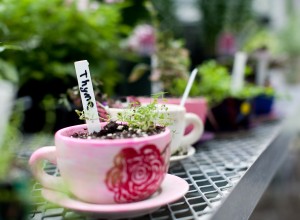Garden to Cafeteria Program
According to the Virginia Department of Agriculture and Consumer Services, there are no state regulations regarding the use of fresh harvested vegetables from school gardens. In fact, the use of healthy, fresh garden produce is encouraged and consistent with Congress’s wellness policy and the stated purpose of the National School Lunch Act, which is to serve “…nutritious lunches to children each day.” Each of the fifty states has implemented their own versions of the United States Food and Drug Administration’s Model Food Code (MFC), which was last updated in 2013.
The MFC sets standards for the storage, handling and preparation of food.This most recent version does not address the use of school gardens, nor preclude the program. As long as school-grown produce is as safely handled as produce from other sources, the MFC does not prohibit its use.
As a result, in order to provide healthy food and nutrition education so that all students will have the opportunity for success in and outside of the classroom, Grafton Integrated Health Network has been working for over a decade to establish a school garden, and more recently, a greenhouse. The Garden to Cafeteria program integrates with our educational science academic program by using classroom hours for practical, hand-on experience with horticulture and nutrition.
Pat Legeer, our career and technical education coordinator, is in charge of the greenhouse and runs the program. She holds a certificate in Greenhouse Management from VA Tech, along with many years of independent horticultural study driven by her passion for the field. Each week, she teaches over 70 clients the basics of growing and maintaining a variety of vegetables, annuals, and perennials inside the greenhouse and in our many gardens located throughout the campus. The clients join in this experience as part of their science class one day a week.
Within this group of clients, Pat has a core group of five to ten who are dedicated to working in the gardens anywhere from one to three hours a day, five days a week. Together, they grow vegetables such as lettuce, tomatoes, cucumbers, peppers, potatoes, and beans. They also grow and maintain an herb garden, cut flower bed, and annual and perennial center.The students take part in all aspects of the growth and care of these plants from seeding and planting, to watering and fertilizing, and harvesting and selling.
Grafton supports clients with a wide range of psychiatric needs. These clients benefit greatly from the Garden to Cafeteria program, each in his or her own, unique way. Encouraging improvements appear as positive changes in attitude toward the natural environment, nutrition, social concerns, and schoolwork; greater self-esteem; higher achievement test scores; enhanced interpersonal skills; and better behavior.
All clients receive a grade from Pat during the hands-on portion of the class, based on how well they behave and work together. One of the goals of the program is to foster confidence and increase personal job preparedness by exposing the students to society-at-large. One way we do this is by allowing our students to take part in the Berryville Farmer’s Market every Saturday morning during the harvesting season. There, they help with transporting, set-up, and sales. The money raised from these efforts filters directly back into the garden program.
Garden to Cafeteria also provides a unique opportunity for clients to learn how to grow fresh vegetables, with the aim of supplying some of their harvest to the school cafeteria for distribution at the lunch service. Not only do the clients take an important role in contributing directly to the nutritional value of the meals served, but they also support the concept of school garden-to-cafeteria programs under the National School Lunch Program (NSLP).
School garden produce can be served as part of a reimbursable meal under the United States Department of Agriculture (USDA) NSLP, so long as the school cafeterias comply with any state or local health and sanitation requirements.Currently there are no federal limitations to using school garden produce in school lunch meals. In fact, federal policy encourages programs like these, even requiring the Secretary of Agriculture to provide competitive grants to schools to implement such programs.
This requirement comes from an NSLP amendment, the Healthy, Hunger-free Kids Act, which went into effect on December 2, 2010.The act supports school gardens by requiring that competitive grants and technical assistance go schools that implement programs allowing better access to local foods.
The lack of state and federal regulations regarding the handling of garden produce usurps the fact that state law requires health and sanitation requirements to be imposed on all food service establishments. Therefore, many schools have created their own standards of handling garden produce to ensure food safety.
Grafton has taken steps to ensure all food service personnel are ServSafe certified, and the required food safety procedures are strictly enforced, using hazard analysis and critical control points (HACCP) based standard operating procedures (SOPs). Additionally, the dietary services manager works closely with the career and technical education coordinator to develop and maximize safety procedures for the Garden to Cafeteria program.
